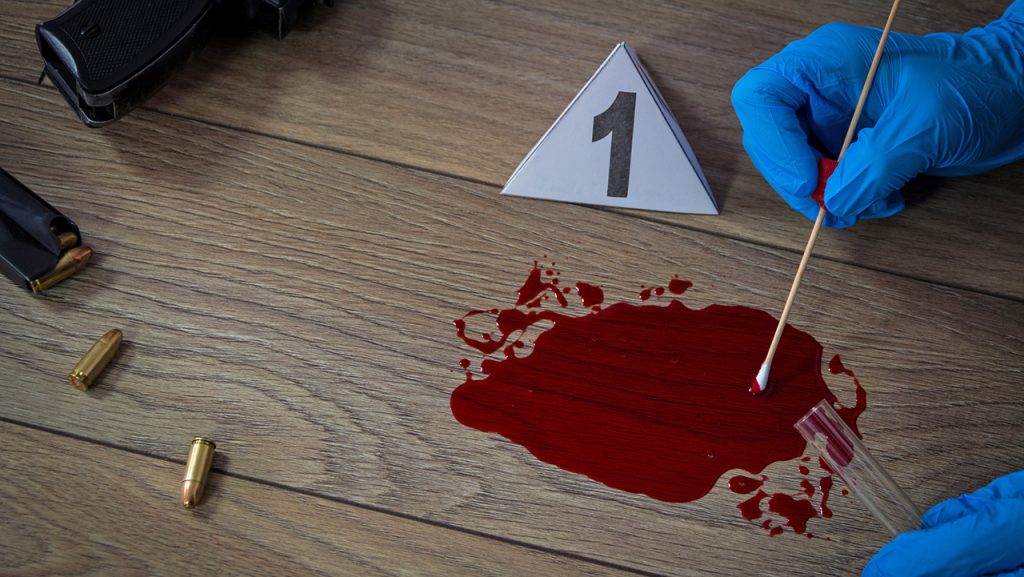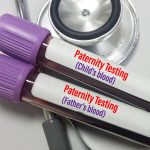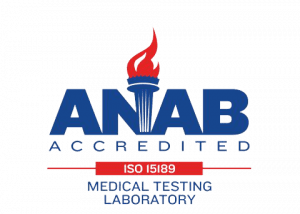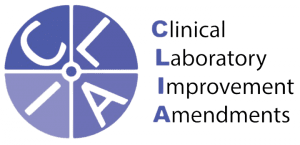If you’ve ever watched a crime drama on television, then you’ve probably heard the phrase “forensic testing” before. On TV, it’s what the scientist does that leads to finding suspects. It usually also means catching the criminal in the last 10 minutes of the show. While this process actually exists, it is not normally as fast or as easy as entertainment makes it out to be. What is a forensic test? Forensics testing is a process by which lab technicians examine deoxyribonucleic acid, or DNA, to determine the identity of a person attached to the sample for a number of different reasons. The most common is usually related to criminal activity and trying to determine whether a suspect committed a crime or did not. It is an excellent tool for determining a person’s identity when you absolutely need to know. There are several different ways to examine a DNA specimen to determine who it belongs to. Experts collect these DNA samples are from internal or external sources. For instance, blood or skill cells are very valuable genetic materials for forensic testing. But how is forensic testing done?
Forensic Testing Methods
The forensic DNA testing process is completed in several different ways and methods. While different scenarios call for different kinds of forensic DNA testing, the following are the most common that scientists and lab technicians could use.
- Short Tandem Repeat (STR) This method is the most-used for crime scene investigation and crime-related forensic testing types. It relies on a genetic sample about the size of a quarter to get results. It is useful for more most situations that require forensic testing, and the FBI has an established database for forensic labs that use this process to help create a baseline for the standard tested 13 specific STR loci. That’s because the likelihood that two people who aren’t identical twins will have the same exact 13 STR loci is approximately one in one billion.
- Restriction Fragment Length Polymorphism (RFLP) This method was used to build the earliest form of genetic fingerprinting. This can be used to identify suspects from genetic material left at a scene. RFLP is still useful for finding markers that point to genetic disorders or diseases. Scientists used RFLP to map the human genome.
- Polymerase Chain Reaction (PCR) This method of DNA replication copies small DNA samples. The process uses polymerase to replicate different strands of sample DNA to create more useable material for other testing methods. It is important for tests that require larger amounts of DNA or for increasing the usability of small samples. PCR helps build a DNA profile.
- Y-Chromosome Analysis Y Chromosomes are passed directly from father to son. Y chromosome analysis is perfect for determining paternity in males. This makes it valuable to situations involving inheritance, infidelity, or a simple test to determine parentage. It helps determine the number of men involved in specific crimes by identifying different y-chromosomes in genetic samples.
- Mitochondrial Analysis This forensic testing technique uses information from a different part of the cell than STR testing methods. It’s possible to gain DNA evidence from materials like bones and hair fragments with mitochondrial analysis. That means old evidence would still be useful for this updated testing technique.
Do Forensic Scientists go to the Crime Scene?
Watching crime dramas might lead you to believe that the people who do forensic testing services show up at different crime scenes in a pair of sunglasses with a witty retort. While it is possible for actual forensic scientists to go to the field if necessary, they spend most of their time in a lab running tests. Crime scene investigators spend a large part of their training learning the best evidence gathering techniques. This guarantees that forensic scientists get what they need to conduct forensic tests and get results.
Forensics and Crime
How are forensics used to solve crimes? We’ve identified some of the different types of forensic testing methods used by laboratories around the world. But that doesn’t answer how it’s possible to catch a criminal with these tests. Forensic science compares genetic markers from the suspect and a sample left at the crime scene. This helps exonerate or incriminate someone the police have in custody. It is also useful for determining who is related and if someone is who they claim to be when someone wants to claim an inheritance. It is even possible to identify a narcotic with forensic drug testing. The process is useful for identifying types of drugs, as well as the person or entity that produced it based on its chemical makeup. How long do forensic tests take? It depends on the type of testing the forensic scientists are running, versus how much genetic material they have at their disposal. Some tests take anywhere between 24 to 72 hours. But due diligence means that some tests might take even longer.
The scientific examination of tangible evidence gathered from the site of the crime or connected to a criminal inquiry is known as forensic testing. Essential data can be found through forensic testing that can be used to detect perpetrators, ascertain the root cause of death, link assault weapons to offenses, and more. In law enforcement investigations and court cases, forensic evidence establishes proof to show whether a person is guilty of the offense. Let’s examine some of the main applications of forensic testing.
How Long Does Forensic Evidence Take to Process?
Depending on the kind of study being done and the waiting list at the crime laboratories, processing forensic evidence might take a long time. Results for straightforward testing like weaponry or fingerprint evaluation could be ready in a few days. However, because of the intricate procedures required in collecting and amplifying tiny fragments of DNA proof, the analysis process could take weeks or even months. Tests for drugs may also take several weeks or more. There is a significant backlog of forensic testing requests at crime laboratories across the United States, which causes lengthy wait periods for results. Analysts, nevertheless, emphasize pressing instances such as sexual misconduct and killings. Timeliness for forensic testing can be accelerated, and backlogs can be minimized with enough funding and resources for crime laboratories.
Types of Forensic Tests
The analysis of forensic evidence involves numerous scientific fields. The following are a few of the primary categories of forensic testing:
DNA analysis: Blood drops, spit samples, hair strands, and skin cells may all be utilized to gather and examine DNA, which can link culprits to offenses or rule out innocent people. DNA profiling has become a critical instrument in the criminal justice system.
Fingerprint analysis: By matching recognized fingerprints with latent prints removed from crime sites, offenders can be identified. Each individual’s fingerprints are different.
Analysis of firearms: By examining the striations on bullets, one can ascertain whether a particular gun was used. Clothing contaminated by gunshot residue can also identify a shooter.
Toxicology tests: A type of forensic test that identifies the presence of medications, poisons, and other harmful materials in body fluids and tissue to ascertain the precise cause of death or disability.
Trace evidence can be used to connect items and people connected to a crime by analyzing minute paint chips, textiles, glass fragments, and other things.
Digital forensics: Analyzing smartphones, computers, and other technological gadgets can yield the necessary evidence for contemporary prosecutions.
Forensics Blood Testing
Human blood specimens discovered at crime scenes are the subject of a critical kind of forensic examination. Even a small stain of blood might reveal a lot to analysts. What forensic blood testing can reveal is as follows:
- An individual can be identified by their DNA profile and blood type (A, B, AB, or O).
- The availability of alcohol, narcotics, or additional drugs
- Potential symptoms of diseases and health issues
Even years after an offense, blood’s absorbing capacity allows it to retain many data. These days, a few dried plasma cells can yield an entire DNA profile through sophisticated DNA testing. Knowledge about the incidents and tools used in armed assaults can also be gleaned from blood splatter patterns and spots. Forensic blood testing is still a vital investigative tool.
Conclusion
As technological advances develops, forensic investigators have a constantly growing number of methods available to further justice. Forensic testing allows authorities by revealing scientifically-precise data concealed inside material proof. It helps reassemble violations and improve situations with truthful evidence.



















